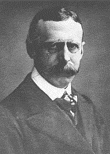Charles van Lerberghe's Human Design Chart
3/5 Sacral GeneratorBelgian poet, short-story writer, and playwright whose reputation rests largely on two collections of poems—Entrevisions (1898; “Glimpses”) and La Chanson d’Ève (1904; “The Song of Eve”)—that exemplify his lyrical talent and idealistic outlook.
A fellow student of Maurice Maeterlinck and encouraged by the Belgian Symbolist Georges Rodenbach, Van Lerberghe in 1886 published his first poems in the Parisian magazine La Pléiade. His next published work, the macabre prose drama Les Flaireurs (1889; “The Trackers”), owes much to Henrik Ibsen. Though it was later disowned by its author, Les Flaireurs (together with one of Maeterlinck’s early works) marks the beginning of the Symbolist “theater of anguish.”
Although his first poems had been published 12 years earlier, Van Lerberghe did not issue a collection until Entrevisions. It consists of 64 poems, some written in free verse. Influenced by Henri Bergson’s theory of duration, these poems explore themes of transience and beauty through vague, indistinct images of the natural world. During this period Van Lerberghe traveled widely in Europe, eventually settling in rural Bouillon, Belgium, to write his masterpiece, La Chanson d’Ève. The predominantly free-verse poems of that volume, influenced by Italian painting, offer up a set of allegorical tableaux in which Eve appears as a primal poet symbolizing universal values. These poems were further publicized when Gabriel Fauré, one of the premier composers of the period, used them as text for one of his masterful song cycles.
He died 26 October 1861.
Link to Wikipedia biography (French)
Discover More Famous People
Browse and analyze over 55,000 public figures and celebrities.
Ra Uru Hu
5/1 Manifestor
Martha Stewart
4/6 Manifestor
David Lynch
4/6 Generator
Barack Obama
6/2 Projector
Steve Jobs
6/3 Generator
Vladimir Putin
5/1 Manifestor
Kim Kardashian
3/5 Generator
Michael Jackson
1/3 Projector
Marilyn Monroe
6/2 Projector
Ariana Grande
2/4 Projector
Oprah Winfrey
2/4 Generator
Johnny Depp
2/4 ManifestorWhat is HumanDesign.ai and how does it work?
Curious what makes Charles van Lerberghe tick? HumanDesign.ai instantly maps their exact birth data into a fully interactive clickable bodygraph chart, letting you hover or tap every center, channel, and gate for plain-language explanations. Bella, the platform’s built-in AI guide, adds context in real time, translating complex mechanics into everyday insights so you can see how Charles van Lerberghe’s strengths, challenges, and life themes play out on-screen.
The same tools are waiting for you. Generate your own Human Design Chart in seconds, open a library of 2000+ suggested questions, and chat with Bella as often as you like to decode your design, daily transits, and even relationship dynamics.
Want to compare energies? Save unlimited charts for friends, family, or clients, then ask Bella to reveal compatibilities, composite patterns, or coaching tips, all in one conversation thread.
Start free with core features, or unlock our Personal and Pro plans for deeper dives: unlimited Q&A, celebrity chart search spanning 55,000+ public figures, white-label PDF reports, branded content generation, and a professional profile with built-in booking for practitioners. Whether you’re exploring your own potential or guiding others, HumanDesign.ai delivers an ever-expanding toolbox of AI-powered insights—no spreadsheets, no jargon, just clarity at your fingertips.
Ready to see yours? Signup for FREE today!

